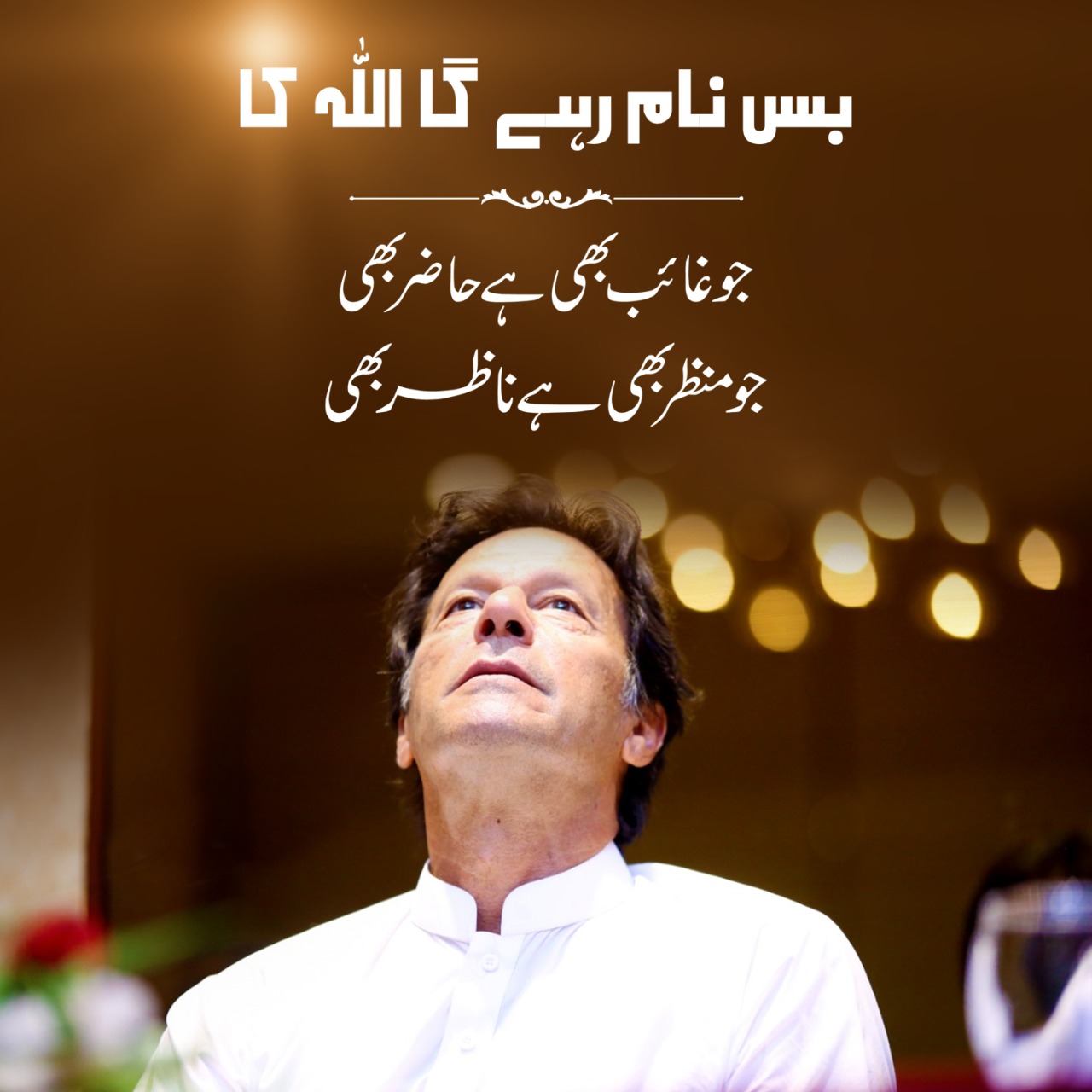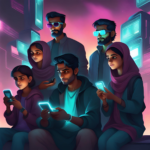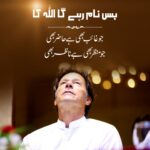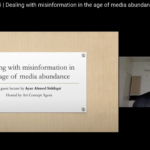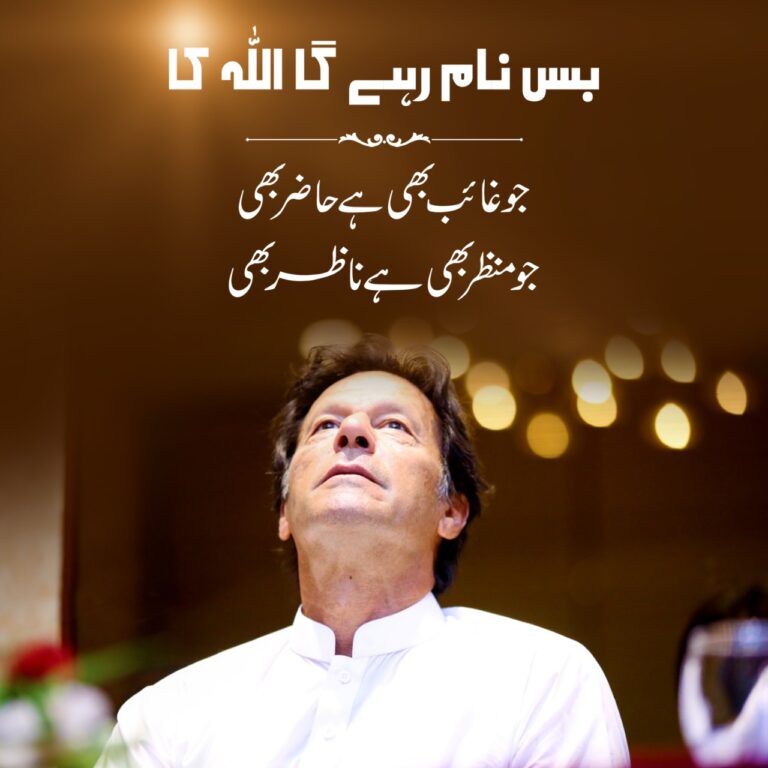It has been nearly five months since the ouster of Ex-PM Imran Khan through a vote of no confidence. The legendary cricketer turned politician remains popular as ever amidst a worsening political crisis. His party continues to draw citizens in large numbers in major cities and townships across Pakistan.
Much has been said about the effectiveness of the party’s campaign strategies in carving out an ‘anti-status quo’ vote bank. However, we will not capitalize on changes happening within Pakistani society if we conflate this constituency with extreme populism in advanced democracies. Consequently, we may inflate the importance of familiar avenues of service delivery – democratic or dictatorial – even as there is a consensus that the system requires drastic overhaul.
In this essay, I argue that it makes sense to focus on PTI’s tendencies towards extremism that are a product of Pakistan’s contentious political culture in the Information Age. I will show that clarity requires for all sides to look beyond their position on the political spectrum in an increasingly multi-polar world. I will also show that a personalization of politics due to new media is influencing identity-based citizen mobilization in ways we don’t fully understand. But a cultural perspective is necessary for a closer examination.
This modest effort is based on a study of campaign messages of mainstream opposition parties since 1988 I have pursued as part of a doctoral thesis.
From populism to extremism
In recent times, populism has gained significant attention by news media globally. In our mainstream media, images of hyper conservative former President Donald Trump and Prime Minister Borris Johnson in the United States and United Kingdom respectively, and former French Presidential candidate Marine Le Pen, are evoked. Special focus is placed on their extreme views towards Muslims, immigrants, and other marginalized communities in the West.
Recent scholarship on the subject however cautions against attributing neat political positions or programs to populists. It points out the slippery definition of the term and rather see it as a political dynamic that can entwine itself in a range of historical trajectories.
In May 2014, Podemos (Spanish for ‘We Can’), won 8% of the vote in general elections and ranked 4th in overall result. The democratically elected, progressive, and Left-oriented party achieved this despite being just four months old. The party arrived at the aftermath of Los Indignados (Spanish for ‘the indignant ones’) anti-austerity demonstrations that were held in Spain near elections in 2011 and 2012. It is characterized with employing a clear populist style and frequently uses social media to engage citizens.
Populism does have recurring themes in the literature, such as an ‘idealized sense of historical nation or community, and a virtuous, homogenous, people whose rights are being usurped by a corrupt elite and a set of dangerous ‘others’. But some communication scholars argue that this should be seen as a set of political styles rather than a consistent set of values.
Alvares and Dahlgren (2016) point out in a paper published in the European Journal of Communication, that populism is episodic, appears in moments of crisis, claims to be revolutionary but leans towards reforms, often with limited efficacy. It is hostile to representative politics but lives symbiotically with it. It’s a term usually aimed pejoratively at others.
They argue that populism is an outcome of an inherent tension within liberal democracy. A tension between how a sovereign ‘the people’, and their rights, are imagined within the polity, and constitutionalism, which is traditionally concerned with complicated institutions, safeguards, laws, and practices meant to modulate the direct political impact of ‘the people’ in the name of freedoms (including safeguards to private property).
Populists often fail to appreciate necessity for constitutional limits on direct democracy. Meanwhile, constitutionalists are not always able optimize citizen input into a stable institutional order veering democracy towards marginalization. A world where traditional institutions of governance, including political parties, are clustered at the center, and many see no real alternatives, people feel frustrated and abandoned and populism is an outcome.
The complex debate on populism rages on but at present many around the world are more concerned with populist tendencies towards extremism and violence. This can also be the locus of public debate around political communication in Pakistan given our precarious context that gives space to violent political actors.
To better understand this it is useful to try to untangle Khan’s populism from Pakistan’s political culture.
Is Khan’s politics an outcome of our political culture?
To better understand the ‘PTI juggernaut’ it’s useful to look at our mainstream political messages since 1988 through a lens of contentious politics. This is when political leaders frame their performance, or promise, in front of the public, in a way that is antagonistic to their opponents.
This antagonism usually boils down to some version of – support us if you want to save Pakistan. A zero-sum game that pits the win of some as a loss for others.
Observe the political rhetoric in our English press since 1988 and no mainstream political party can claim to be free of contentious claims. If one reads speeches of Benazir Bhutto, it will be impossible to ignore that among other things, Nawaz Sharif’s corruption, incompetence, lack of vision, popular will and Sindh’s sacrifice for Pakistan, were one of the mainstays of her public persona.
Nawaz Sharif, initially a protégé of Zia, projected an aura of a Punjabi strong man, a considerate modern Muslim, capable of executing glamorous infrastructure and consumer projects explains Iftihikar Dadi, in his study on political posters in Karachi between 1988-1999. Notable is that Sharif was tasked by the powers that be with organizing dharnas, against his main rival PPP, of the kind PTI is known for today.
Meanwhile, the ever present civil-military imbalance in the polity has arguably resulted in the notion of evil civilian politicians etched in our collective psyche. Whereas the modus operandi of political clerics in public is usually to declare their opponents as bad Muslims.
More recently, a fiery Mulana Fazlur Rehman, vanguard of PDM, opined in a presser before the controversial SC verdict, that to save Pakistan it is necessary to take Imran Khan to task.
Of course, no political actor has mastered the art of contentious discourse the way PTI has. The party operates like a tactical PR firm as it readily evokes tropes of corruption, chor, incompetence, revolution, mafias, conspiracy, treachery, and more, against whoever and whatever the party organizers perceive as a hurdle in Chairman Imran Khan’s mission to save Pakistan.
Yes, political messaging of our mainstream parties is not always contentious. The hum drum of everyday parliamentary debates is informative. We see contention more often when political temperatures rise, such as during elections, protest events and arguably, military rule. Suffice to say that Pakistan’s political culture is often polarizing, contradictory, argumentative, emotionally charged and there is a sense of existential insecurity that can be traced back to our very foundation.
So, if Imran Khan’s politics in these uncertain times appear contentious and extreme, it is possible that is an outcome of a populist style, within our mainstream political culture, rather than a coherent political program. It is an expression of a contention within our political discourse that any political actor with national aspirations must adhere to stay relevant. This makes more sense when we assume that like all mainstream parties and military rulers, PTI also lacks substance.
But my perspective is to not equate PTI’s politics with democratic parties and dictatorships. Rather it’s a call for a dispassionate reflection in polarizing times when our position on the political spectrum is more likely to cloud judgement.
It’s a call to reflect upon the lexicon from a Cold War era expressed in rigid terms like: ghadars versus patriots, honestversus corrupt, Musalman versus Kafir, freedom fighter versus terrorists, secular versus religious, leftists versus rightistand indeed many more.
In this regard a creative slogan of Aurat March is telling: Ye binary, Wo binary, No binaries!
Also read: Aurat March a Threat to Mainstream Tribalism in Pakistan
Creating a vocabulary to describe what can be called a wholesome Pakistani world view is a contentious task on its own. Existing literature revolves around the troubled relationship between Pakistan and its Islamic identity. Such cultural work turns even more challenging in the Information Age where new media is shaping the debate in unforeseen ways.
Mobilizing support through political identity and new media
In Making Sense of Pakistan, Farzana Shaikh argues that a major reason for Pakistan’s troubled relationship with Islam is that solutions have been sought mostly in material terms. She writes that a generation of scholars inspired by the neo-Marxist tradition of Cambridge School of History have looked at socio-economic and political interests as causal factors of state dysfunction, rather than as symptoms of underlying uncertainty about identity. Less attention is placed on “the very real force of powerful normative concerns informed by an Indo-Muslim religious discourse” (p. 10).
As Pakistan turns younger the question of Pakistani Identity remains ever present. But we lack the vocabulary to even describe the world beyond a good Muslim right wing and bad Muslim West liberal dichotomy.
Meanwhile, in a relatively short time, Pakistan’s political culture has transformed from being driven by a mass media logic where messages flow from – one to many – to a new media logic where they flow from – many to many. This transformation is powered by information and communication technologies. It has resulted in a fragmentation of our fragile public sphere where much of opinion formation takes place. It has facilitated a new kind of personalized politics that was absent only a decade ago when elites, partisans, pundits and lobbies dominated public discourse.
A study of print advertisements of three major parties, the PPP, PMLN and PTI, in the general elections of 2013, found that the PTI had advertised the least amount (Yousaf, 2016). A plausible explanation, the author concludes, is the party’s “integrated approach, using different communication avenues to reach prospective voters…” (p. 48). Another study of these election campaigns in 2013 showed that while most parties used Twitter, PTI Twitter messages were most diverse, interactive, focused on specific social and political issues, provided real time updates and called out citizens to vote (Ahmed & Skoric, 2015). Such reports open up new ways to see media politics and its evolution in Pakistan and also reveal our limited understanding of how political entrepreneurs are using information and communication technologies globally.
This tech-led disruption is not just a fad, and we are witnessing just how those stuck in the usual ways are slowly getting sidelined in nearly all disciplines. Although the effect on politics is more visible and researched.
PTI’s new media strategy has facilitated Khan’s rise as the most significant political actor in the country. Much of the support is also possible through successful mobilization of the electorate in spectacular rallies. At these rallies hip contemporary and spiritual Pakistani music and flood lights peppered with short speeches of political leader’s centre stage create a festive atmosphere akin to a rock concert. Celebrities, artists, opinion leaders, young and old either attend these rallies or participate through screens.
For many, the experience of these media spectacles is of a diverse, energetic, hopeful, changing, and post-modern Muslim Pakistan. It runs in stark contrast to traditional tropes of sacrifice, injustice, veiled women, ethnicities, incompetent civies and victimhood upon which mobilizations in Pakistan are based.
Conclusion: countering hate & nation building through the medias
However Khan and his influence is characterized it may be simplistic to see this strange newness through a lens of extreme populism alone. We must be mindful of our historical baggage. One may disagree but in the mediated space created by PTI is also a unity in practice (not just words) which goes against policies of exclusionism that fuels extremism.
Imran Khan’ narrative then is not only what he utters but also what happens in response; parliamentary debates, constitutional battles, polarizing new media discourse, research in institutes, arguments in our homes, bazaars, work places, public squares and even our foreign relations.
Is it so bad that this strange populism appeals to a perceived urban middle class, and diaspora, as well as working class citizens of Tehreek-e-Labbaik? How is migration from rural to urban areas influencing society? What practical solutions do Pakistanis of a secular ilk have to bring diverse people together for common objectives?
Literature on hate speech tells us that no matter how satisfied we think citizens are political entrepreneurs can exploit identities for myopic objectives. It also shows that countering hate is simpler for governing small homogenous communities then it is for large diverse populations.
Making sense of Naya Pakistan therefore is not a straightforward task given Pakistan’s complicated issues of identity. The experiment can be traced back to the liberalization policies of early 2000’s. It is arguably an outcome of a weak state’s strategies to build governance capacity through cultural production. Much good has come out of it in terms of giving ordinary citizens a voice while policies, such as the Single National Curriculum, alerts us of excesses.
I’m not a blind supporter of PTI but my politics doesn’t change the fact that many voters don’t see any other option. The last time so many Pakistanis stood on one political platform was in the late 90’s when they did with Nawaz Sharif. This public momentum can be turned into our advantage as we realign our priorities away from rent seeking ones.
It will likely get worse before it gets better. But opportunities are there for those willing to accept radical change. For the moment we all know who is leading the race.
References
Ahmed, S., Skoric, M. (2015). Twitter and 2013 Pakistan General Election: The Case of David 2.0 Against Goliaths. In I. Boughzala, M. Janssen, & S. Assar (Eds.), Case Studies in e-Government 2.0: Changing Citizen Relationships (pp. 139–161). Springer International Publishing. https://doi.org/10.1007/978-3-319-08081-9
Alvares C, Dahlgren P. Populism, extremism and media: Mapping an uncertain terrain. European Journal of Communication. 2016;31(1):46-57. doi: https://doi.org/10.1080/14746680701210352
Yousaf, S. (2016). Political marketing in Pakistan: exaggerated promises, delusive claims, marketable development projects and change advocacy. Journal of Public Affairs, 16(2), 140–155. https://doi.org/10.1002/pa
Shaikh, F. (2009). Making Sense of Pakistan. New York: Columbia University Press.

